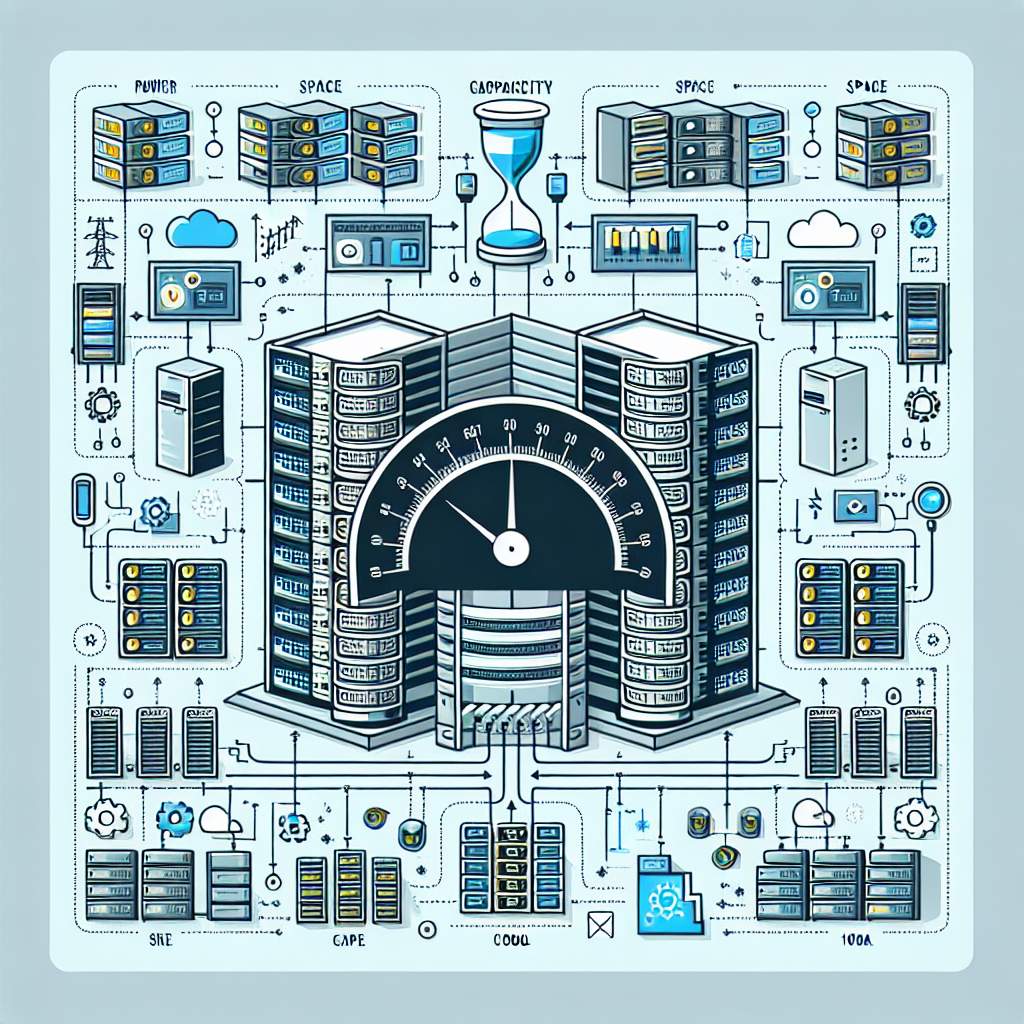Your cart is currently empty!
Key Factors to Consider in Data Center Capacity Planning

Data center capacity planning is a crucial aspect of ensuring smooth operations and optimal performance in data centers. It involves evaluating current resources, forecasting future needs, and making strategic decisions to meet those requirements. Here are some key factors to consider in data center capacity planning:
1. Current and Future Workloads: Understanding the current workloads and projecting future growth is essential in capacity planning. Analyzing the types of applications, their resource requirements, and how they may evolve over time will help determine the amount of computing, storage, and networking capacity needed.
2. Power and Cooling: Power and cooling are critical factors in data center operations. As data centers consume a significant amount of energy, it is essential to assess the power and cooling infrastructure to ensure it can support current and future demands. Factors such as server density, HVAC efficiency, and renewable energy options should be considered in capacity planning.
3. Scalability: Data center capacity planning should take into account the scalability of infrastructure components. Scalable solutions, such as modular data center designs and cloud services, can help accommodate growth without the need for significant upfront investments. Planning for scalability will also enable data centers to adapt to changing business requirements more effectively.
4. Redundancy and Resilience: Redundancy and resilience are critical for ensuring high availability and data protection in data centers. Capacity planning should include provisions for redundant power supplies, backup cooling systems, and failover mechanisms to minimize downtime and data loss. Evaluating the impact of potential failures on operations and implementing appropriate redundancy measures is vital for maintaining business continuity.
5. Compliance and Security: Compliance with regulations and security standards is a key consideration in data center capacity planning. Data centers must adhere to industry-specific regulations, such as GDPR or HIPAA, and implement robust security measures to protect sensitive data. Capacity planning should address compliance requirements and incorporate security measures to mitigate risks and ensure data integrity.
6. Total Cost of Ownership (TCO): Assessing the total cost of ownership is crucial in capacity planning to optimize resource utilization and minimize operational expenses. Calculating TCO involves evaluating the costs associated with hardware, software, maintenance, energy consumption, and other factors over the lifecycle of the data center. Understanding the TCO will help make informed decisions about investments in infrastructure and technology upgrades.
In conclusion, data center capacity planning is a complex process that requires careful consideration of various factors. By analyzing current workloads, forecasting future needs, and evaluating scalability, redundancy, compliance, and TCO, data center operators can ensure their facilities are equipped to meet evolving demands and deliver reliable and efficient services. Effective capacity planning is essential for maintaining the performance, reliability, and security of data centers in the digital age.

Leave a Reply